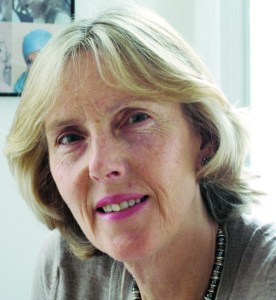What better place to debate how emerging technologies are transforming healthcare than the Silicon Valley? Bathed in sunshine, the Stanford University campus is a magnet for people with the vision and skills to create new futures, and Stanford Medicine X (#MedX) attracts health innovators from a wide range of disciplines. Now in its fifth year, the meeting, led by Larry Chu, an anaesthetist at Stanford, is notable for its “inclusivity.” Patient scholars, in particular, play a major part; both as members of the steering committee and speakers in the forum’s informal TED style talks, panel discussions, and workshops which flow with showbiz panache.
This year the meeting was preceded by the inaugural meeting of Stanford Medicine X | Ed (#Meded) where two days were spent debating the future of medical education. Here medical students played a leading role and made it clear that Millennials ( born between 1980’s – early 2000’s), whose use of social media is integrated into every other aspect of their life, are not happy with the educational status quo.
Lambasting unimaginative rote teaching geared to passing exams, Nisha Pradhan, medical student and co- editor of In-Training, an online magazine for students, said “Teaching should foster independent critical thinking and reasoning. And become much more interdisciplinary, “to reflect that fact that doctors now work primarily in teams. Fellow students, turned digital entrepreneurs, Ryan Hanes and Shiv Gaglani, described the new teaching app that they have developed with backing from the Robert Wood Johnson foundation. The strapline for their app, Osmosis, “Learn More and Forget Less, ” is appealing, and around 25 000 medical students worldwide use it, they said. Students can upload lectures and notes and share learning materials, and are prompted by regular repetition exercises and jogging messages.
Bertalan Mesko, a geneticist and medical “futurist” has developed an e learning based course at Semmelweis University in Hungary and emphasised that students must acquire digital skills to practise 21st century medicine.
“Patients will [soon] know more about their diagnosis and treatment [than doctors] and they will have their own data,” he said. “Doctors must learn to work collaboratively with them” and this can be facilitated by social media he suggested.
One way to do this suggested, Ajay Major, a student at Albany Medical College, would be to involve patients in interdisciplinary twitter chats. Marie Ennis O’Connor, one of MedX’s e patient scholars, agreed and suggested that the #FOAM (Free Open Access Medical Education) initiative should take this up.
Among the other essential skills students should acquire, empathy was flagged repeatedly by several speakers. Sharing stories between multidisciplinary team members (where patients are on the team) can help. But the work junior doctors are expected to do leaves them too little time interacting with patients, Abraham Verghese, a physician at Stanford, and author of Cutting for Stone, underlined. And one of the consequences of this, he said, was high rates of depression among doctors.
“We are losing the ritual of being with patients,” he warned and must also go back to “teaching basic clinical skills at the bedside.” The failure to acquire and practise these skills erodes communication and jeopardises patient safety, he said. “Medicine is [and must] remain a human experience.”
Millennial patients want more than empathetic doctors, though. They want partnership and autonomy. Some of the most empowered are out to change the healthcare system in ways which span involvement in educational programmes, leading on patient support and self management initiatives, co-designing services, to spearheading research initiatives.
Emily Kramer-Golinkoff, another of MedX’s e-patient scholars, described the strictures of living with severe cystic fibrosis. She said the failure of the medical community to offer her any hope of an effective treatment (for her rare variant) led her to becoming “the agitator who gets the patient community together.” Emily’s Entourage, the campaign she set up, has raised $1.5m for research into new treatments. Her message to the meeting was: “Don’t underestimate patient and carers drive to improve healthcare.”
Debate on the “democratisation of medicine” was spurred by Eric Topol, a professor of genomics who heads the Scripps Institute. He said the doctor’s black bag had been transformed into a digital resource which can be used by health professionals and patients alike. Running through a raft of new technologies and scientific developments coming on stream he also made predictions about the extent to which self monitoring and ordering lab tests on line will progress, concluding with the view that “ it won’t be long before we can all take Xray “selfies,”. But as we face “ a fundamental change in the doctor patient relationship, “ he said one change was well overdue.
“ Patients must be given access to their notes and all their health data,” he said. It’s a “civil right. “ “It’s not acceptable that 70% of doctors are not willing to give this to patients.”
But however articulate patients may be, the burden of illness they carry daily should not be ignored and I was pleased to find that a room had been set aside for patients to rest at the conference, and a dedicated meeting doctor was on hand if any needed support . As conference leaders everywhere wrestle with the challenge of meeting the call for “Patients Included” in their conferences these are points to note.
Another is a post meeting observation made by Denise Silber, who runs the Paris based Doctors 2.0 & You conference.
“Medicine and the health system still operate with an incomplete view of the people they are trying to help. The system is not set up to understand what’s going in the patient’s life or in their spirit, they treat the body and not the whole. And it’s only by including the whole that we will really improve health.”
Tessa Richards is senior editor/patient partnership, The BMJ.
